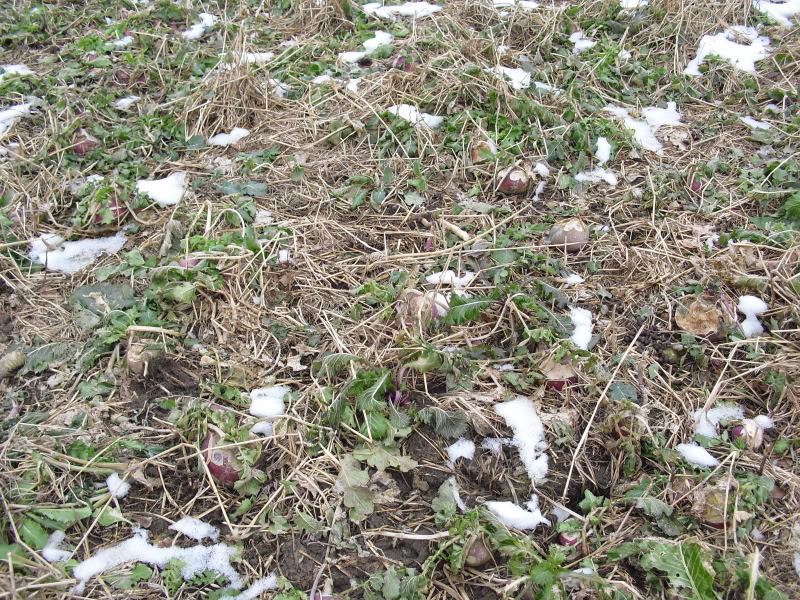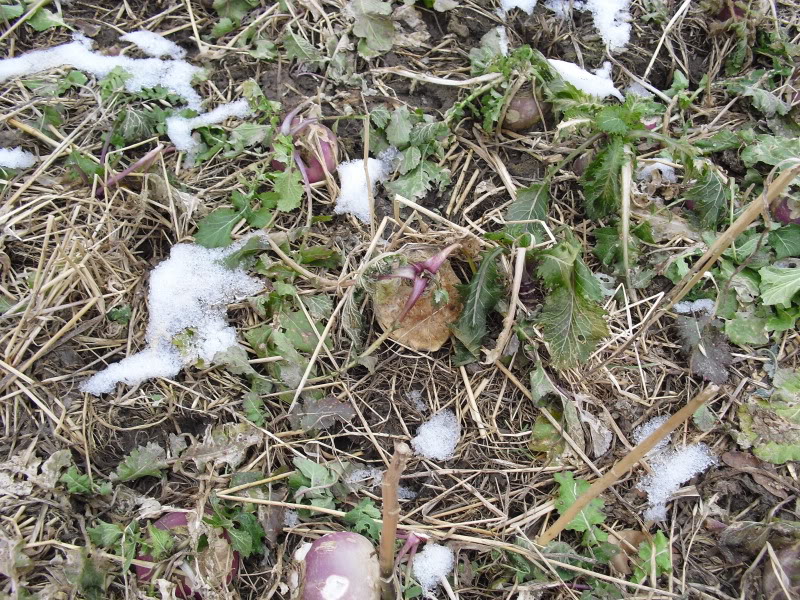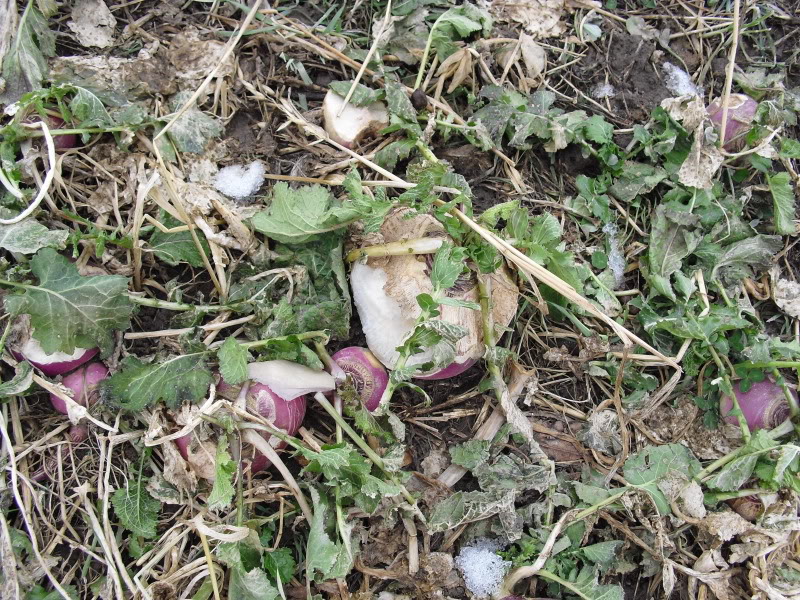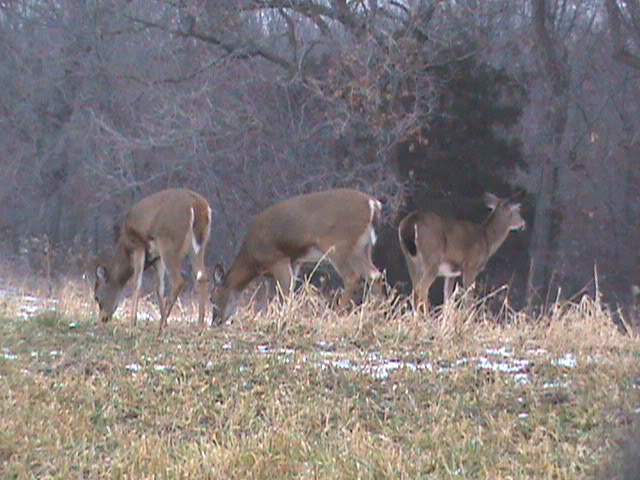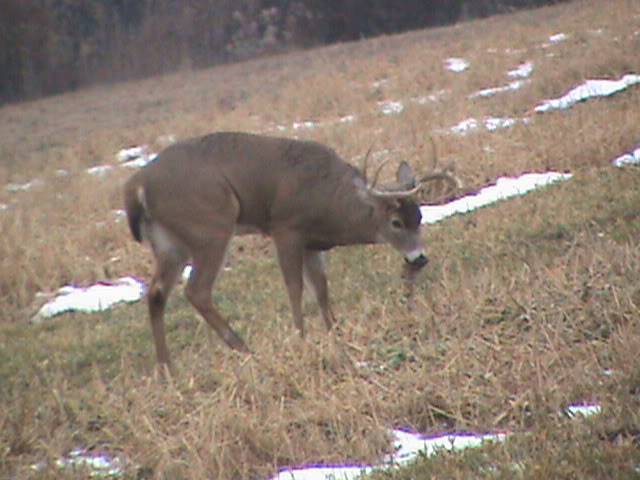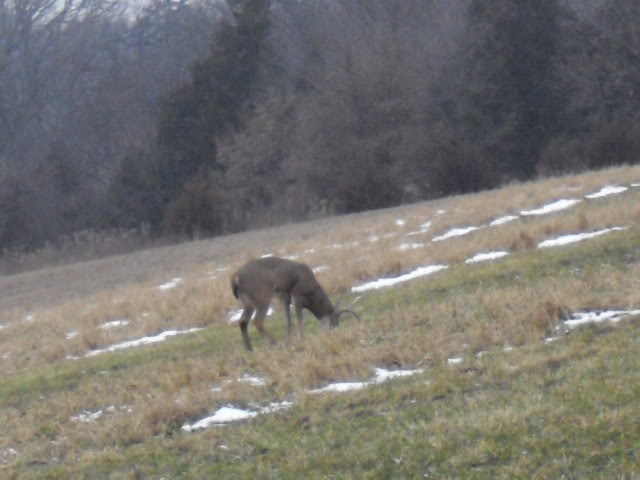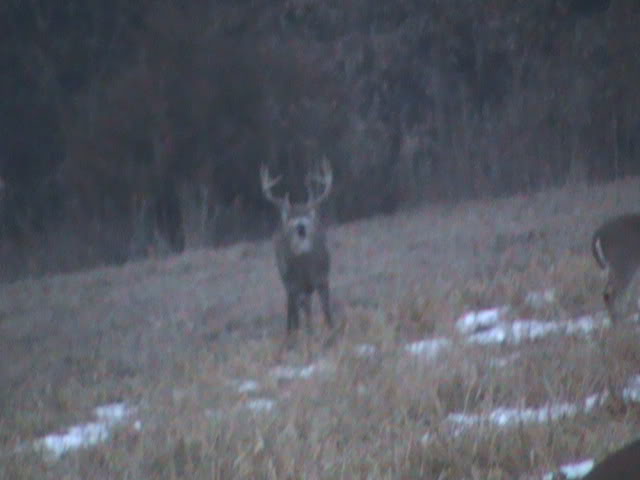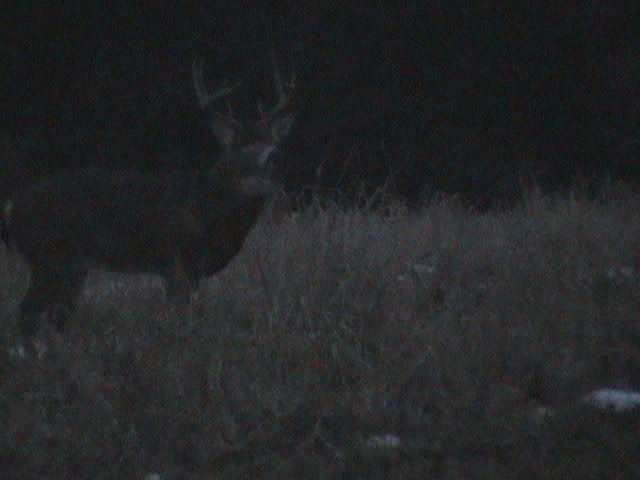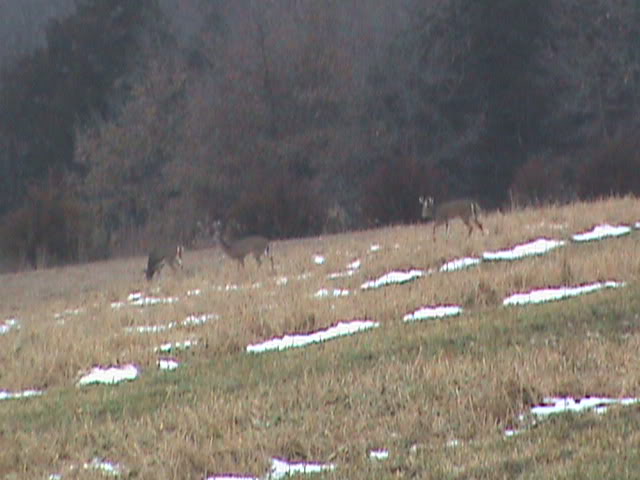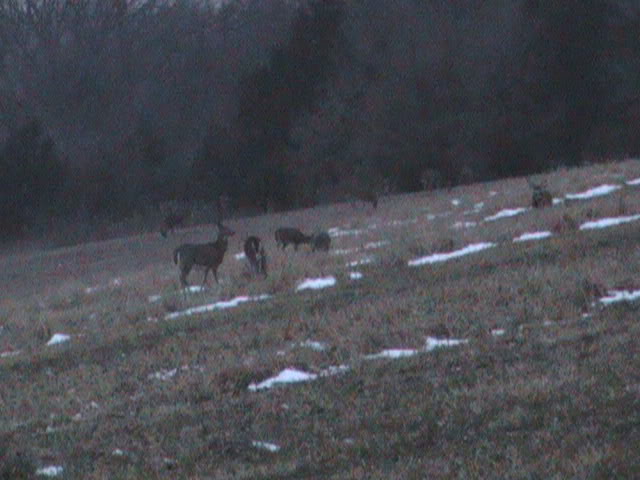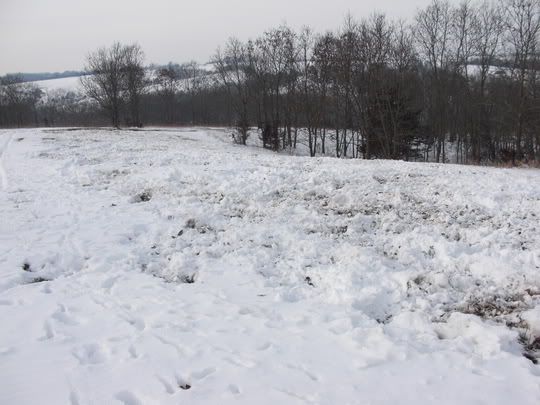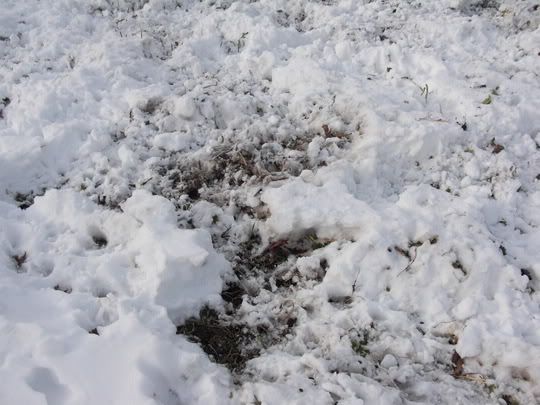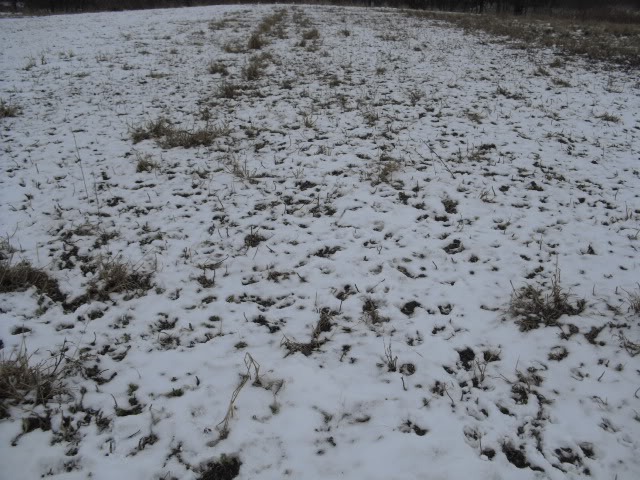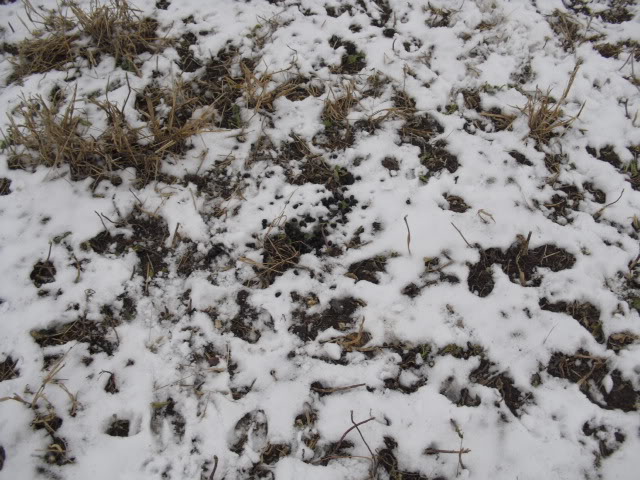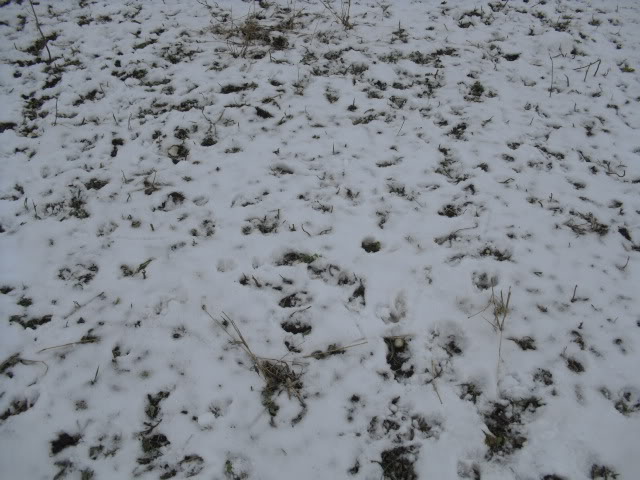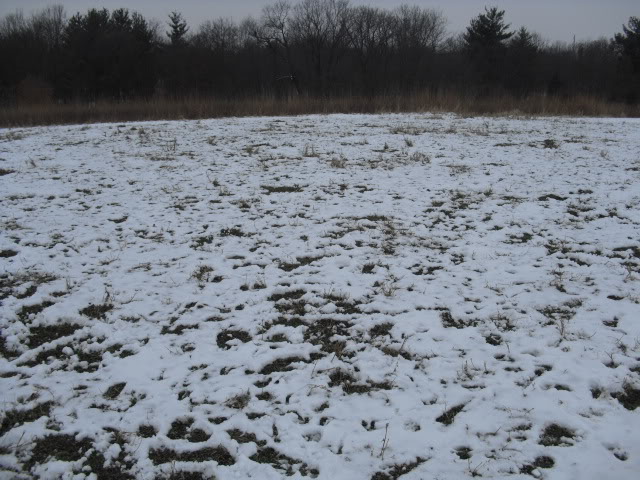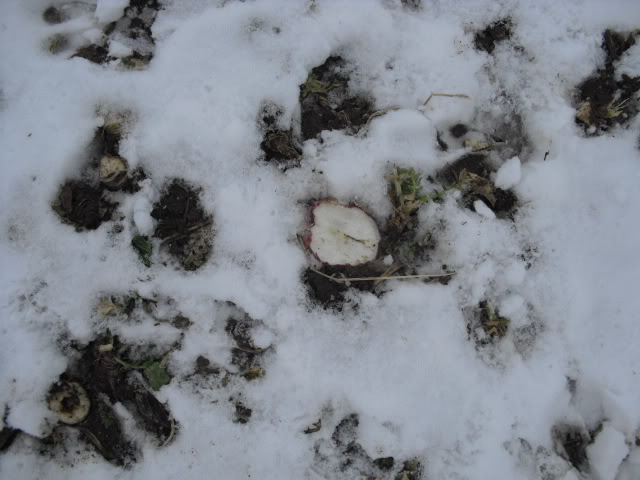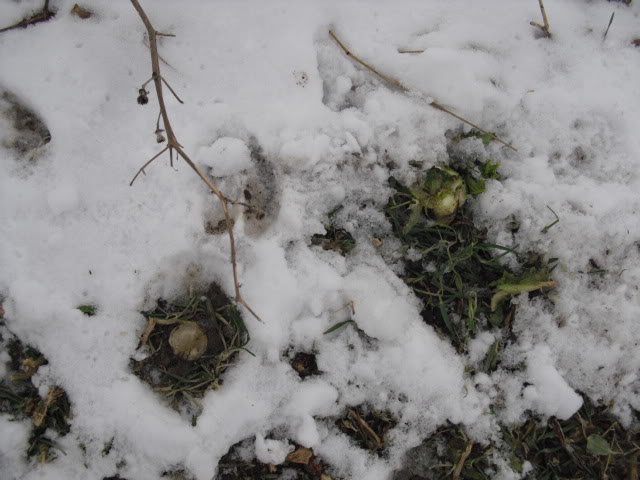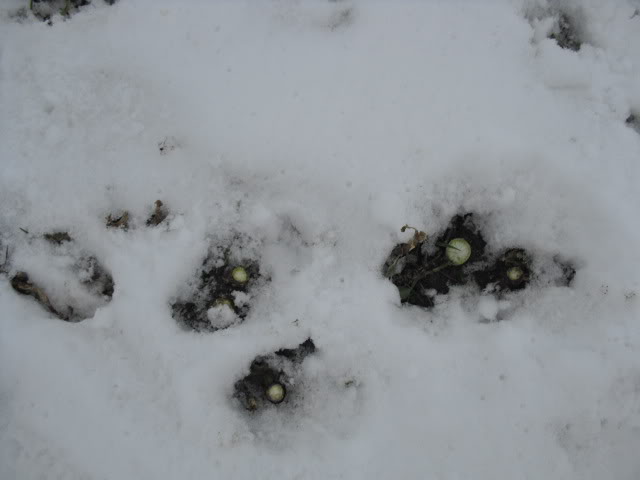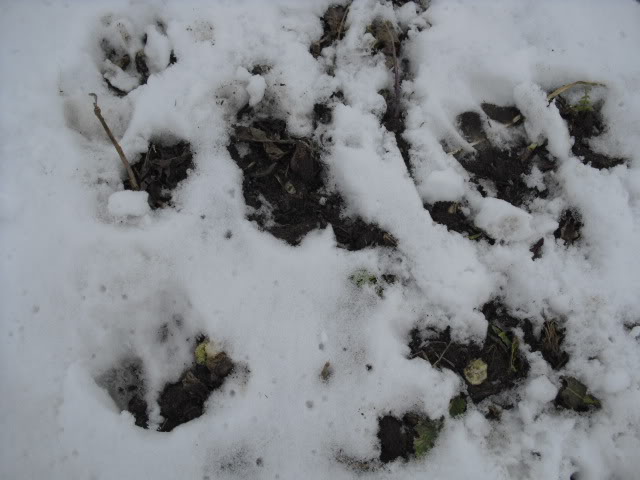With all this snow would it be better if the turnips were bladed or snowblowed off or should it just be left and let them fend for themselves ??
They are hitting mine but half is under snow and the other is blown off clean.
I suppose they would appreciate being able to get to it but clearing that much snow might be a hassle!
I think if I was hunting a plot like that and had the option, I migh blade a swath clear the day before and then "mop up" when they come in to feed!
 Deer almost always choose to forage on rape versus turnip tops early in the season, so why bother with adding turnips to a brassica mix?
Deer almost always choose to forage on rape versus turnip tops early in the season, so why bother with adding turnips to a brassica mix?
Once deer adapt to foraging on brassicas they generally will begin to utilize the turnips tops earlier in the fall but it is the roots that are important for a late winter attraction. I had a few days before our late muzzleloader season opens so I decided to go to a friends farm where we had planted the following mix in late July.
Dwarf Essex Rape Seed 1#
Purple Top Turnips 1#
Appin forage turnip 1#
Barkant Forage Turnip 1#
Barnapoli Rape Seed 1/2#
Pasja Hybrid Brassica 1/2#
GroundHog Forage Radish 5#
We have implemented "strip plotting" on his place so that we had strips of brassicas and strips of winter rye/oats/peas and Groundhog forage radish and red clover. I'll share pictures of the rye in the cereal grain forum but despite being right beside a field of corn that was 1/2 standing 1/2 harvested, they poured into the food plots and fed on both the rye and the turnip roots.
The brassicas at first glance don't look like much this time of year
but closer inspection reveals a bountiful harvest that deer are feeding heavily on
Good quality brassica seeds, regardless of source should run roughly $2-3 a pound and despite claims by those companies who market seed exclusively to hunters my testing has proven absoutely no preference or advantage to any brand or variety over another. Typically however, companies who advertise and market products solely to hunters will charge 2-3 times the real value of the seed.
In 2 1/2 hours I watched upwards of 40 deer enter these plots and feed in some cases for an hour or more on these brassicas, none of which came from "buck on a bag" sources. These deer were certainly not starving with freshly harvested corn only yards away and in fact walking thru the corn to get to the food plot.
Several good bucks that appear to be in the 4 yr old range literally gorged themselves on the turnip roots
This ole boy stayed out there for nearly 2 hours stuffing him self with turnip roots
and stayed until it was too dark to take pictures!
From a little after 3:00
until dark...the brassicas were getting hammered!
These deer had never tasted a brassica in their life before this year and last year this field was weeds 8 feet high so they were not adapted or trained to feed there before this year.
Welters Seed is a great source for brassica seed but there are many sources including nannyslayers co-op, Welters web site is very informative and will give you a fair price comparison to check against your local sources.
Welter Seed & Honey Co.
I urge everyone to avoid planting ALL brassicas but to include seperate plantings of cereal grains and clovers to allow for rotations and to provide a steady year around source of feed for your whitetails......



